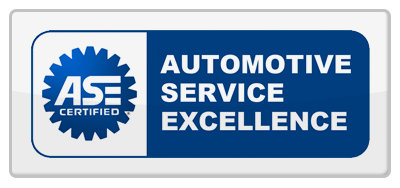What to Do When Your Engine Overheats
Many modern automobiles are so refined that you can hardly hear their engines anymore, but don’t be lulled into complacency—there’s still a combustion cycle taking place under the hood, and catastrophic overheating remains a remote possibility. That’s why you should periodically check your vehicle’s temperature gauge while driving. Every gauge has a normal stopping point once the engine is warmed up; it’s usually a bit below the midpoint line between cold and hot. It’s probably not a doomsday scenario for your engine if your gauge ever reads anywhere above normal, but it could easily become one if you don’t take prompt action. Here are the steps you’ll need to know.
Step 1: Check for steam
The one surefire indication that you’ve really got an overheating engine is that old B-movie standby: plumes of steam pouring out before your eyes. Except it likely won’t be that dramatic, so take a closer look. If you see any steam at all, proceed to Step 3 posthaste lest you meet the same fiery demise as many a B-movie villain. Steam is bad. Take it seriously.
Step 2: Turn off your A/C, Turn on your heater
If you’re the cautious type, skip directly to Step 3—but bear in mind that older engines in particular are prone to mild overheating on hot days, especially when the air conditioner has been running. There’s nothing out of the ordinary in this case; you just need to give your engine a breather. So if you don’t see any steam, you can turn off the A/C and see if that calms things down. If it doesn’t, put your heater on full-blast, which will transfer heat away from the engine. Of course, it will also transfer heat toward you, but your comfort is a lesser priority than the engine’s at this point. If these measures don’t work in short order, then you’ve definitely got a problem, and you need to stop driving and figure it out.
Step 3: Pull over and turn off your engine
When you find a safe place to stop, get there and kill the engine immediately. Do not idle the engine while you’re collecting your thoughts. Engines have to work harder to keep cool at idle than at cruising speed, and the last thing you want to do is add stress to a potentially overheating engine. So turn it off, and then take that breath. NOTE: If you are not a do-it-yourselfer, and you believe your engine is suffering from more than just temporary overload, now is the time to call for roadside assistance. The remaining steps will require you to get your hands dirty.
Step 4: Pop the hood
WARNING: Very likely it’s hotter than usual under there. You’ll get a feel for this once you’ve pulled the hood release and the hood is slightly ajar. If the heat strikes you as potentially dangerous—as it may well be—then let the engine cool down before proceeding. Only open the hood fully when you are confident that it’s safe to do so.
Step 5: Check coolant levels
Your engine should have a coolant reservoir in the vicinity of the radiator (see your owner’s manual for the exact location). This is usually made of plastic and thus unlikely to be dangerously hot. Check the coolant level in this reservoir. If it’s normal, you’re in luck—chances are you’ve just got a malfunctioning temperature gauge. As long as there are no other signs of overheating, you can restart the engine and proceed with caution. If it’s low or empty, however, there’s probably a coolant leak somewhere. Calling for roadside assistance is strongly advised here, though the more mechanically inclined might first inspect the radiator hoses for loose clamps and such.
Step 6: If you need to keep driving…
Wait until you’re certain that the engine is cool, protect your hand with a thick glove or rag, and twist off the radiator cap. Coolant is normally visible just below where the cap sits (your owner’s manual will have the details), but if your engine’s overheating, the coolant in your radiator should be visibly depleted. Be sure to refill both the radiator and the reservoir, using coolant or—if necessary—water. This should bring the temperature down once you’re underway, but remember, you’ve got a serious leak somewhere, so be vigilant. If the temperature starts rising again, you’ll have to pull over and repeat the process. Incidentally, by no means should you view this as a long-term solution—your engine needs professional help, so get your mechanic on the job as soon as you can.
_________________
Thank you for visiting Mercie J Auto Care in Mesa serving: Mesa, Gilbert, & Apache Junction, AZ where we love our customers and their kids! Expect Hot Wheels Racing, Great Customer Service & Excellent Mechanics who know how to fix anything that comes through these bay doors! Our goal is to have everyone of EVERY age to leave happy!
Schedule your appointment today (480) 830-9445 or REQUEST APPOINTMENT HERE.
Tags: a/c, engine, coolant, vehicle issues, engine overheating











